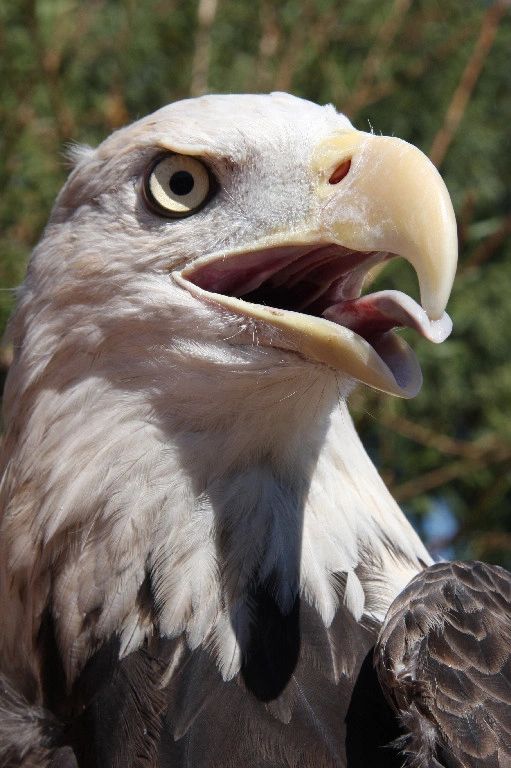THE AMERICAN BALD EAGLE

SOTUS (his name means "symbol of the United States")

The majesty and strength represented by the bald eagle have long been world-renowned and its image
was officially adopted as the national emblem for the United States of America on June 20, 1782.

The bald eagle was chosen as the emblem of the United States of America because of its long life, great strength and majestic looks, and also because it was then believed to exist only on the North American continent.

The American Bald Eagle The bald eagle (Haliaeetus leucocephalus), the national bird of the United States of America, is the only eagle unique to North America. The bald eagle's scientific name signifies a sea (halo) eagle (aeetos) with a white(leukos) head. At one time, the word "bald" meant "white," not hairless. Bald eagles are found throughout most of North America, from Alaska and Canada to northern Mexico and typically inhabit sea coasts, forests, valleys, mountain regions, lakes and rivers. About half of the world's 70,000 bald eagles live in Alaska. Combined with British Columbia's population of about 20,000, the northwest coast of North America is by far their greatest stronghold for bald eagles. They flourish here in part because of the salmon. Dead or dying fish are an important food source for all bald eagles. Eagles are a member of the Accipitridae family; which also includes hawks, kites, and old-world vultures. One of the largest raptors, the bald eagle has a wingspan of 6 to 8 feet. Scientists divide eagles into four groups basedon their physical characteristics and behavior. The bald eagle is a sea or fish eagle. There are two subspecies of bald eagles. The "southern" bald eagle, Haliaeetus leucocephalus leucocephalus, is found in the Gulf States from Texas and Baja California across to South Carolina and Florida, south of 40 degrees north latitude. The "northern" bald eagle, Haliaeetus leucocephalus alascanus, is found north of 40 degrees north latitude across the entire continent. The largest numbers of northern bald eagles are in the Northwest, especially in Alaska. The "northern" bald eagle is slightly larger than the "southern" bald eagle. The biggest threats to the bald eagle are habitat loss because of development in coastal areas, PCB poisoning, and being shot for their feathers. The use of pesticide DDT in this century poisoned the eagles' foods and weakened their eggshells, making them too thin to support the weight of brooding parents. A 1972 ban on DDT let to gradual improvements in species population. References: www.baldeagleinfo.com and www.npca.org |
 |







